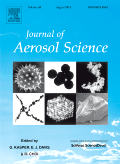
JOURNAL OF AEROSOL SCIENCE
Scope & Guideline
Connecting scholars to the forefront of aerosol research.
Introduction
Aims and Scopes
- Aerosol Characterization and Measurement Techniques:
Research in this area involves the development and application of advanced techniques for measuring aerosol properties, including size, concentration, and composition. This includes studies on the performance of low-cost sensors and novel analytical methods. - Aerosol Dynamics and Transport:
The journal emphasizes the dynamics of aerosol particles, including their transport, deposition, and interaction with environmental factors. This includes computational modeling and experimental studies of aerosol behavior in various environments. - Health and Environmental Impacts of Aerosols:
Research focusing on the effects of aerosols on human health and the environment, including studies on bioaerosols, the transmission of infectious diseases, and the impact of aerosols on air quality and climate. - Aerosol Generation and Emission Sources:
This area includes investigations of aerosol generation mechanisms from various sources, including combustion processes, industrial activities, and natural phenomena, as well as the characterization of emissions from these sources. - Aerosol Mitigation and Control Technologies:
The journal also covers research on technologies and methodologies to mitigate aerosol emissions, including filtration systems, spray technologies, and other innovative approaches to reduce aerosol-related risks.
Trending and Emerging
- Integration of Machine Learning and AI in Aerosol Research:
There is a growing trend towards the use of machine learning and artificial intelligence to analyze aerosol data, improve sensor calibration, and optimize aerosol modeling, showcasing the intersection of technology and aerosol science. - Public Health and Pandemic Response Research:
The COVID-19 pandemic has led to an increased focus on aerosols as vectors for disease transmission, with research exploring aerosol generation, dispersion, and mitigation techniques in public health contexts. - Investigation of Bioaerosols and Antibiotic Resistance:
Research on bioaerosols, particularly regarding the presence of antibiotic-resistant genes and pathogens in aerosols, has gained prominence, highlighting the need for understanding the implications of airborne microorganisms on health. - Advanced Aerosol Generation Techniques:
There is a noticeable increase in studies exploring innovative aerosol generation methods, including laser-based techniques and high-speed aerosolization, which are critical for both research and industrial applications. - Climate Impact Studies Related to Aerosols:
Research focusing on the interactions between aerosols and climate change, including their role in cloud formation and radiative forcing, is becoming increasingly relevant, reflecting a broader concern for environmental sustainability.
Declining or Waning
- Traditional Aerosol Collection Methods:
Research focused on older aerosol collection techniques may be declining as newer, more efficient methods are developed. There is a trend toward adopting modern technologies that enhance measurement capabilities and accuracy. - Basic Theoretical Studies:
The journal seems to be experiencing a decline in papers that focus solely on basic theoretical models without experimental validation. The current trend favors studies that integrate theoretical work with practical applications and experimental results. - Static Aerosol Studies:
There is a noticeable decrease in research that examines aerosols in static or controlled environments. More studies are now focusing on dynamic systems and real-world applications, reflecting a shift toward understanding aerosol behavior in more complex and variable conditions.
Similar Journals

Frontiers of Environmental Science & Engineering
Pioneering interdisciplinary research for environmental innovation.Frontiers of Environmental Science & Engineering is a premier journal published by HIGHER EDUCATION PRESS that stands at the forefront of interdisciplinary research in environmental science and engineering. Established in 2013 and converging its scope through 2024, this journal has swiftly ascended to a notable Q1 category in the Environmental Science (Miscellaneous) segment, highlighting its remarkable impact and relevance. With a Scopus ranking of 27 out of 233 in its field, placing it within the top 88th percentile, it serves as a crucial platform for disseminating cutting-edge research, innovative methodologies, and pressing environmental concerns. Researchers, professionals, and students alike will find valuable insights and opportunities for collaboration within its pages. While the journal operates under a subscription model, its commitment to advancing the field makes it an essential resource for those dedicated to addressing the world's environmental challenges, fostering sustainable practices, and pioneering engineering solutions.
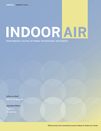
INDOOR AIR
Transforming Spaces, Enhancing Lives.INDOOR AIR is a leading peer-reviewed journal published by WILEY-HINDAWI, focusing on the critical field of indoor environmental quality and its impact on public health. Since its inception in 1991, this esteemed journal has been at the forefront of research in Building and Construction, Environmental Engineering, and Public Health. With a commendable Q1 ranking across these categories in 2023, INDOOR AIR has established itself as a pivotal resource for scholars and industry professionals alike, as evidenced by its impressive Scopus rankings—35th in Public Health, 14th in Building and Construction, and 20th in Environmental Engineering. The journal is dedicated to disseminating groundbreaking research, reviews, and case studies that advance knowledge and methodologies in improving indoor air quality and its implications for health outcomes. Aspiring to maintain open access to vital scientific discourse, INDOOR AIR invites contributions that foster interdisciplinary collaboration and innovation in understanding indoor environments. Based in Denmark, the journal continues to engage a global audience committed to enhancing health and well-being through improved indoor air quality.
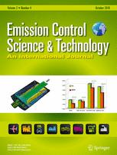
Emission Control Science and Technology
Innovating Emission Control for Healthier EnvironmentsEmission Control Science and Technology is a cutting-edge journal published by SpringerNature, aimed at disseminating innovative research and advancements in the field of emission control technology. With an ISSN of 2199-3629 and an E-ISSN of 2199-3637, this journal serves as a crucial platform for sharing knowledge among researchers, professionals, and students engaged in automotive engineering, environmental science, and public health. Since its inception in 2015, the journal has grown in stature, reflected in its impressive Q2 ranking in Automotive Engineering and Q3 rankings in Health, Toxicology and Mutagenesis, Management, Monitoring, Policy and Law, and Pollution for 2023. With a commitment to open access, it stands as a vital resource for those looking to make impactful contributions to the field, addressing critical issues such as environmental sustainability and public health. Through rigorous peer-review processes, Emission Control Science and Technology ensures that only the most relevant and high-quality research is published, making it an essential read for anyone invested in the future of emission control and environmental health.

Aerosol Science and Engineering
Transforming Research into Sustainable Aerosol SolutionsAerosol Science and Engineering is a pioneering journal dedicated to the interdisciplinary study of aerosols, their formation, properties, and their impact on environmental and human health. Published by Springer Nature, this journal aims to advance our understanding of aerosol behavior in various contexts, including atmospheric science, industrial applications, and pollution mitigation. With an ISSN of 2510-375X and an E-ISSN of 2510-3768, it benefits from a comprehensive Open Access model that ensures wide dissemination of research findings. Aerosol Science and Engineering is indexed in prestigious databases, holding a respectable Q3 quartile ranking in fields such as Environmental Chemistry and Materials Science for 2023. The journal’s scope spans from 2017 to its future convergence in 2024, making it a critical resource for researchers, professionals, and students alike who are striving to understand and innovate in the realm of aerosol science. Each published article contributes to the collective knowledge needed to address pressing environmental challenges and drive sustainable technological advancements.
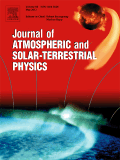
JOURNAL OF ATMOSPHERIC AND SOLAR-TERRESTRIAL PHYSICS
Fostering Interdisciplinary Dialogue in Atmospheric ScienceJournal of Atmospheric and Solar-Terrestrial Physics, published by Pergamon-Elsevier Science Ltd, stands as a pivotal academic resource in the realms of Atmospheric Science, Geophysics, and Space and Planetary Science. With an ISSN of 1364-6826 and an E-ISSN of 1879-1824, this journal encompasses a robust collection of research findings and reviews that address the intricacies of atmospheric processes and solar-terrestrial interactions. The journal has shown consistent academic performance, earning commendable rankings in 2023, including Q3 in Atmospheric Science and Q2 in Geophysics, reflecting its importance for scholarly communication and advancement in these fields. Spanning an impressive convergence of research from 1997 to 2024, it aims to foster interdisciplinary collaboration and inspire innovations among researchers, professionals, and students. Although it currently does not offer open access, the journal is committed to disseminating high-quality content that continues to drive forward our understanding of complex environmental phenomena.
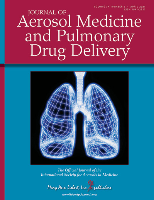
Journal of Aerosol Medicine and Pulmonary Drug Delivery
Delivering insights for a healthier tomorrow.The Journal of Aerosol Medicine and Pulmonary Drug Delivery, published by MARY ANN LIEBERT, INC, is a distinguished journal dedicated to advancing the field of aerosol medicine and pharmacology. With an ISSN of 1941-2711 and E-ISSN 1941-2703, the journal has established itself as an essential resource for researchers and professionals specializing in pharmaceutical sciences and pulmonary medicine. Ranking in the Q2 category across multiple disciplines, including Pharmaceutical Science and Pulmonary and Respiratory Medicine, it holds notable Scopus rankings, with a percentile of 78th in Pulmonary and Respiratory Medicine. The journal offers open access options, ensuring that cutting-edge research is readily available to a global audience. With converged years from 2008 to 2024, the Journal of Aerosol Medicine and Pulmonary Drug Delivery continues to serve as a vital platform for disseminating innovative research findings, clinical practice insights, and technological advancements in drug delivery systems, thereby significantly impacting therapeutic strategies for respiratory diseases.

Pleura and Peritoneum
Fostering collaboration in diagnostics and treatments.Pleura and Peritoneum, an esteemed open-access journal published by WALTER DE GRUYTER GMBH, has been a vibrant platform in the field of Internal Medicine since its inception in 2016. With an ISSN of 2364-7671 and E-ISSN 2364-768X, this journal is dedicated to advancing the understanding of pleural and peritoneal diseases through rigorous research and insightful reviews. Located in the heart of Berlin, Germany, it aims to bridge gaps in knowledge and encourage collaborative approaches in diagnostics and treatments, making it a valuable resource for professionals, researchers, and students alike. The journal holds a significant standing with a Q3 ranking in Internal Medicine and is listed in the Scopus rankings, reflecting its commitment to quality and influence in the field. By providing unrestricted access to its content, Pleura and Peritoneum supports the dissemination of crucial findings while fostering an inclusive environment for knowledge-sharing and innovation.

JOURNAL OF THE AIR & WASTE MANAGEMENT ASSOCIATION
Exploring the Intersection of Science and Environmental PolicyJOURNAL OF THE AIR & WASTE MANAGEMENT ASSOCIATION is a leading publication in the fields of environmental science, pollution control, and waste management, published by Taylor & Francis Inc in the United Kingdom. With an impressive history of publication dating back to 1989 and a commitment to advancing knowledge and practice in these critical areas, this journal serves as a valuable resource for researchers, professionals, and students alike. It holds a 2023 impact factor reflected through its competitive rankings in four distinct categories: Q3 in Atmospheric Science and Q2 in Management, Monitoring, Policy and Law, Pollution, and Waste Management and Disposal. The journal's dedication to disseminating innovative research and best practices plays a vital role in enhancing environmental policies and strategies globally. Although not currently Open Access, the journal is accessible through its ISSN 1096-2247 and E-ISSN 2162-2906, providing opportunities for rich academic discussion and collaboration in addressing pressing environmental challenges.

ATMOSFERA
Illuminating Climate Challenges Through Rigorous ResearchATMOSFERA is a prestigious journal published by CENTRO CIENCIAS ATMOSFERA UNAM, dedicated to advancing the field of Atmospheric Science. With an ISSN of 0187-6236 and an E-ISSN of 2395-8812, this bilingual journal has been a vital resource for researchers since its inception in 1988. Located in Mexico City, the journal serves as a platform for high-quality original research, reviews, and case studies that explore various atmospheric phenomena, climate issues, and environmental challenges. Although currently categorized in the Q4 quartile of Atmospheric Science, ATMOSFERA aims to contribute to the growing body of knowledge in the field and improve its ranking over the next few years, emphasizing rigorous scientific inquiry and fostering collaboration among scholars. Its accessibility and commitment to open communication make it an essential reference for professionals and students striving to understand and address complex atmospheric dynamics.

Atmospheric Environment-X
Bridging research and real-world solutions for our environment.Atmospheric Environment-X, published by Elsevier Science Ltd, is a premier, open-access journal dedicated to advancing our understanding of atmospheric science and environmental disciplines. Since its inception in 2019, the journal has established itself as a critical platform for disseminating high-quality research, evident by its impressive Scopus rankings—39th out of 233 in General Environmental Science and 27th out of 148 in Atmospheric Science, placing it within the top quartiles of its fields. Operating from the United Kingdom, Atmospheric Environment-X aims to bridge the gap between fundamental research and practical applications, addressing pressing issues related to air quality, climate change, and environmental sustainability. With its commitment to open access, the journal encourages broad accessibility of knowledge, ensuring that cutting-edge research reaches a global audience of researchers, professionals, and students eager to contribute to the field. Join us as we explore the complexities of our atmosphere and its critical interactions with the environment through groundbreaking studies published up to 2024.